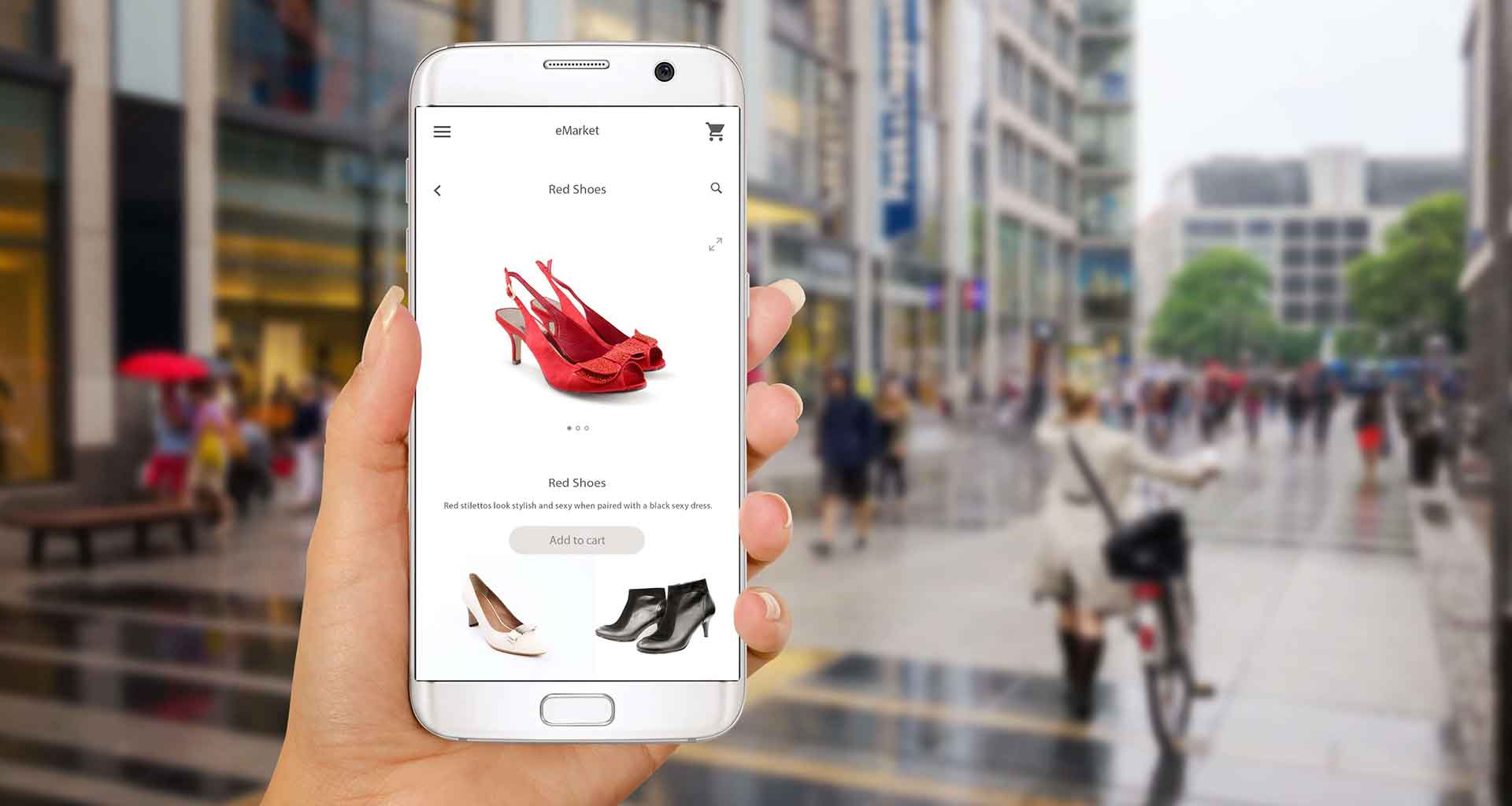Contents
Online retail has been revolutionized in recent years; creating ease for consumers while allowing retailers to track and influence the buying process, effectively reshaping how, where and when customers interact with their brand.
Yet, all this progress has created a new set of sales challenges. Understanding and addressing these e-commerce obstacles is the key towards improving sales processes, driving a better customer journey, delivering more consumer conversions, and ultimately garnering a greater level of success for your business.
What Prevents Sales in Online Retail: 4 Main Challenges
Buyer uncertainty
How many times have you not completed an online purchase because you weren’t sure of what you would get?
Buyer uncertainty is a known barrier to purchase completion with online shoppers abandoning their shopping carts 68% of the time.
Unmet expectations
How many times have you been forced to return a product that was not what you expected or did not fit your home?
Inaccurate product descriptions are the key factor in 25% of online returns.
Bureaucratic obstacles
How many times have you given up in the middle of filling out a complicated online form, such as for an insurance or mortgage quote? While there’s no conclusive statistics on form abandonment, various case studies indicate that around 60% – 70% of users will abandon their form before seeing it through to completion.
Technical barriers
How many times has a simple technical issue caused you to shop elsewhere?
Whether a bug in a form or a confusing mandatory field, when consumers confront a technical challenge — either due to their own lack of proficiency or or a technical issue on your end — their business will go to your competition.
The key to removing obstacles within the online purchasing process is to provide a clear and effective user journey for customers. Visual engagement accomplishes this goal through simplifying and personalizing the customer’s experience. Providing customers with accurate information at just the right time, is often the push required to convert the sale.
What Visual Assistance Technologies Enable Sales in E-Commerce
The future of e-commerce will be built on AI, computer vision, AR/VR and mobile technologies. Let’s take a look at some of these technologies and how they are being used today to enhance e-commerce:
Video Chat as a Sales Tool
Highly familiar to most users thanks to Skype and Facetime, video chat enables a sales representative to help a customer face to face during the purchase process, so the interaction becomes a personal session with a consultant. This very basic visual communication tool creates a sense of trust and transparency, effectively improving customer satisfaction and increasing sales conversion.
Examples:
- Visualization for confirming product suitability: A consumer is wavering on completing a purchase transaction for a new water filtration machine due to concerns that the filter will be too difficult to replace. The sales rep suggests a video chat session,and then visually demonstrates how simple it is to change the filter.
- Video chat as a tool for building trust: B2B buyers can also benefit from video chat, as it builds rapport with personal interaction. Visualization allows a customer to see the company’s physical space, as well as the look and professionalism of the company representative, which can be a determining factor in whether to pursue a business relationship.
Co-browsing and Screen Sharing as a Sales Tool
Co-browsing and screen sharing allow sales reps to see and interact with a customer’s screen in real time, visually guiding them through product inventory and images, online processes, webforms, transactions or demos.
Sales Reps can move their mouse around, point at the customer’s browser, highlight relevant information and annotate. The technology makes the customer experience easier, and eliminates friction, abandonment and frustration.
Examples:
- E-Commerce: A customer is about to abandon a sale on a new pair of shoes, because the coupon code is rejected. The pop-up chat offers the help of a live agent, which he accepts. The agent suggests a screen sharing session and uses annotation to guide him through the process of properly entering his coupon code, thereby saving the sale.
- Finance: While shopping for a mortgage quote online, a customer becomes frustrated half way through the process of filling out a lengthy and complex form. Via a screen sharing session, the rep is able to walk her through the rest of mortgage form fields, explaining them clearly, guiding when necessary and cheerleading when motivation gets low. This level of personal guidance ensures the customer doesn’t give up until the mortgage quote is delivered, increasing conversions dramatically.
- Service providers: While researching the best family mobile plan, a customer has a difficult time understanding which plan is best for his needs, and is about to abandon the sale. The CSP’s rep uses co-browsing to provide personal visual guidance to the customer. The rep explains the different contracts, listens to the customer’s needs and guides him as to which plan will deliver the best value , ensuring the contract is signed.
Augmented Reality Online Solutions as Sales Tools
Augmented Reality (AR) – the ability to overlay and share physical objects, spaces and images on mobile devices – enables customers to merge the physical and virtual world by merging virtual objects with their physical surroundings or their own images. It allows them to try before they buy, and removes any uncertainty from decision-making. AR allows brands to bring the store experience to their customers wherever they are, enabling complete virtualization prior to purchase.
Examples:
- Fashion and cosmetics: This industry has seen a plethora of AR apps that help customers to visualize how they would look in a new outfit, eyeglasses, hairstyle or cosmetics. For example, a group of young customers are searching for a bright new lipstick for prom night. By going online and uploading their high-res color images, they can “try on” and compare multiple colors and looks. What could have been a dull errand is transformed into a fun and joyful experience, contributing to better sales and higher brand engagement.
- Furniture and appliances: AR helps shoppers transform their homes into virtual showrooms. Wayfair View in Room 3D and Ikea Place are examples of two AR apps that allow customers to visualize furniture in their own home ahead of purchase. For example, a customer would like to replace their old sofa, but cannot decide whether the one they are considering would overpower the space. Using an AR app allows them to project the sofa in 3D at full-scale, clearly showing them that the item is suitable for their room. These apps eliminate the guesswork when shopping online and simplify the path to purchase.
- Automotive: Car manufacturers have utilized AR capabilities to acquaint prospective buyers with an overview of the vehicle via a visually immersive experience. AR-based manuals allow consumers to use their smartphone or learn more about the car’s features and maintenance requirements.
In-Store AR as a Sales Tool
A number of retailers have integrated AR technology into their in-store experience. Mobile app-driven, this technology encourages engagement with in-store signage, displays and other physical elements on site.
Examples:
- AR mirrors: Instead of relying on a customer’s smartphone, retailers can incorporate AR into their in-store window displays or mirrors. This has been proven successful in cosmetic applications and apparel, such as with Timberland’s virtual dressing room and Neiman Marcus’ Memory Mirrors, which enable shoppers to compare clothing options side by side, and even share the images with friends.
- Inventory access: Brick and mortar stores are limited in space and ability to maintain a large volume of inventory. Consumer electronics sellers can use in-store AR to showcase a much wider list of products than actually physically located in the store. Users can see products with add-on features, sizes or colors, while enabling the retailer to save on in-store inventory costs.
- Product info and demonstrations: In-store based AR apps encourage a customer to point his smartphone at a product sign. The app then pulls up product details, including customer reviews, pricing, and size or color variations. It may also highlight the product in action or showcase additional functionalities or features.
Live Video Assistance as a Sales Tool
Visual sales assistance refers to a live video engagement between a sales rep and a customer needing assistance. Both see the same physical environment via the customer’s smartphone, and the rep uses the power of AR to direct the customer toward the sale completion. This technology delivers the capability for sale steps to provide practical help to customers, such as measuring space in the home, recommendations for relevant products, or to showcase added functionalities.
Examples:
- Room design: A consumer cannot decide whether to purchase a specific model of a washing machine because the dimensions are unclear on the website. He initiates a video chat session with the sales rep, shows the rep his spatial limitations, and is assured that the machine will fit well in his laundry room.
- Demonstrate device functionality: After a year of enjoying the convenience of a smart entertainment system, a customer is prepared to expand their smart home by installing a smart lighting system. Using visual sales assistance, the manufacturer is able to visually demonstrate how the customer can integrate the two, thereby encouraging the purchase.
Visual Assistance as a Sales Strategy
Visualization is becoming a critical part of any sales-driven strategy. In this new age of integrated commerce, visual engagement can have a dramatic impact on e-commerce, brick and mortar stores, and B2B buying experiences.
The visual experience is powered by a variety of technological solutions for different use cases: video chat, co-browsing and screen sharing, AR online and in-store solutions, and visual sales assistance. All deliver personalization, smooth sales processes and a customer experience that is both fun and efficient.
Use of visualization in the sale process prevents buyer uncertainty, decreases cart abandonment, reduces excessive returns and most importantly, delivers an immersive visual experience that will close the sale.






